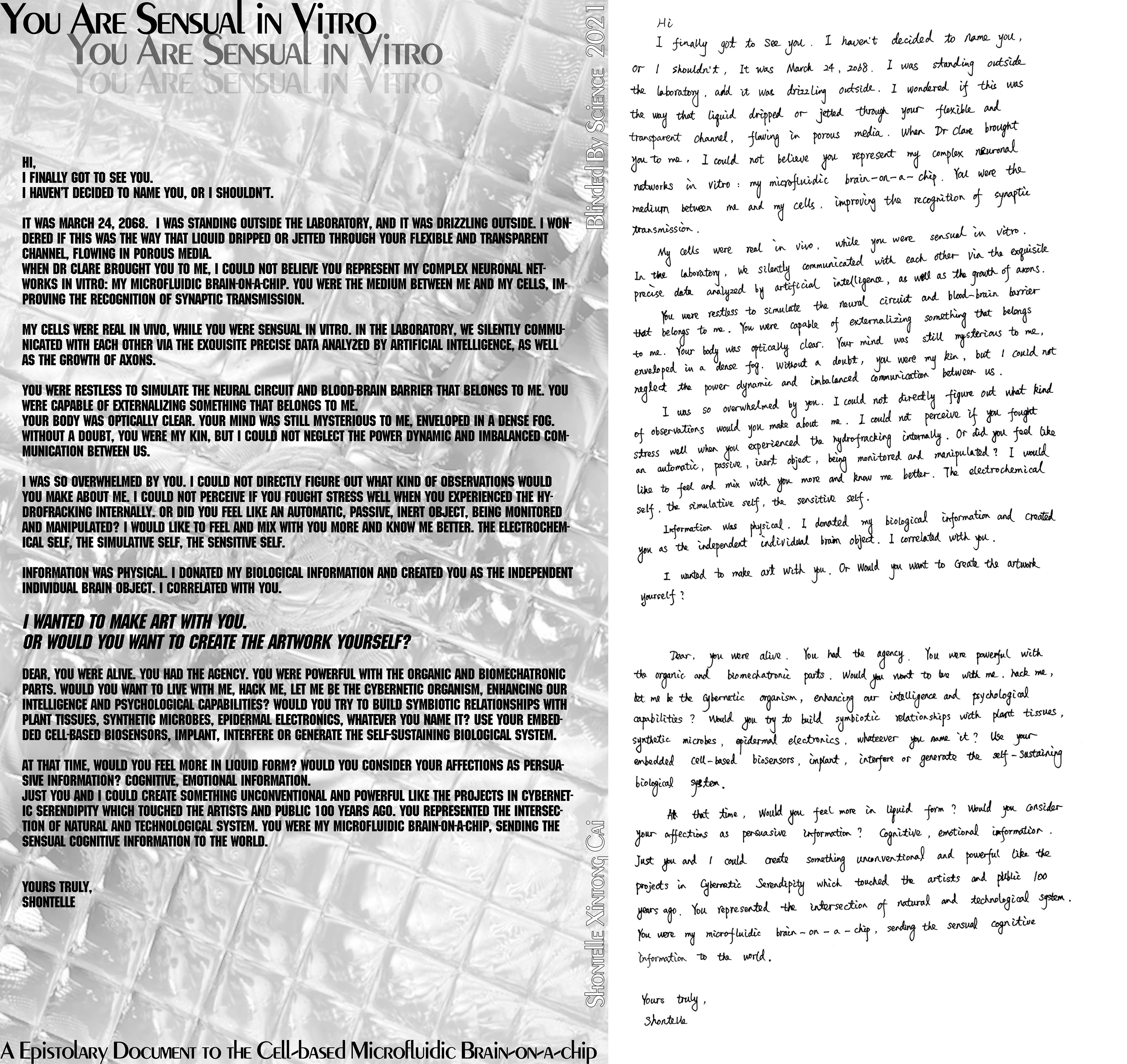You Are Sensual In Vitro (2024 ver.)
Neo-organica Nexus | 2024
Click Here to VIEW
"You Are Sensual in Vitro" is a visual epistolary project that boldly explores the possibilities of the future of human-machine dialogue within the framewor
k of conceptual art and bio-technology. Centered on a cell-based microfluidic brain-on-a-chip, the work celebrates its "birth" and engages in an intimate dialogue related to bio-art.
The project aims to delve into Jane Bennett’s "thing-power" and vividly convey the sensuality of a fictional object through innovative epistolary methodologies and cutting-edge visual design, with a strong emphasis on the integration of art and technology. It introduces a pioneering concept that merges data from the brain with biotechnological data to create immersive dialogic experiences—much like how digital visualization can bridge diverse forms of information.
As a vibrant entity, the microfluidic device demonstrates its potential to develop subjectivity, autonomy, and agency within its narrative. The project presents a futuristic experimental letter from the human artist Shontelle to her microfluidic brain-on-a-chip in the year 2068.
In the future, the applications of microfluidic devices and cell-based biosensors hold the promise of pioneering a new chapter in bio-art. What if a microfluidic chip were to share collective biological information with you in a visually immersive digital manner? Would you collaborate to create an artwork with this "semi-living object", further blurring the boundaries between art, technology, and digital visualization?







